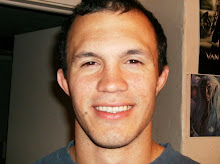We have covered finding the probability of drawing into specific card, when drawing multiple cards from the top of your deck. But what if we want to know about the probabilities of drawing multiple cards in a set, from a certain amount of draws from the top of the deck. To get this probability, we need to use the Law of Multiplication. The Law of Multiplication looks as follows:
P(A and B) = P(A) x P(B)
However, because the probability of drawing from a system without replacement creates conditional probabilities, the Law of Multiplication will look as follows:
P(A and B) = P(A) x P(B given A)
To put P(B given A) in perspective, lets assume that we have successfully drawn one card from a set of four, from the top card of a sixty-card library, and we want to know the probability of drawing the second card of the set of four from the next draw. The overall deck size has been depleted by one, and the number of cards from the set of four has been depleted by one as well. Therefore P(B given A) is 3/59. So the overall probability of drawing two cards from a set of four, in the top two cards of a sixty card library is as follows:
P(A and B) = 4/60 x 3/59 = 0.339%
The Probability Laws of Addition and Multiplication are especially useful in finding Mana Availability Curve, as we need to draw into multiple lands to play cards with converted mana costs higher than one (which is most cards). Remember that in Probability: Law of Subtraction, we can use P prime, to find overall probabilities, so long as we remember to subtract P prime from one at the end. So lets say we want to know the probability of drawing 2 of 20 lands, in the top 3 draws from a deck of 60 cards. In order to do this we will have to break down the possible combinations of where we can draw into the first and second cards of the set of twenty. In the table below, P(A) represents the probability of drawing into the first land, and P(B) represents the probability of drawing into the second land.
| P(X)/Event | First Possibility | Second Possibility |
| P(A) | First Draw | Second Draw |
| P(B) | Second Draw | Third draw |
Finding P'(A and B) will be the same as finding P'(A) + P'(B)P(A), according to Probability: Law of Addition. I will show the proof for this as follows:
Given: P(X and Y) = P(X) + P(Y)(1- P(X)), according to Probability: Law of Addition.
Prove: P'(A and B) = P'(A) + P'(B)P(A)
By substituting all instances of P(X) for P'(A), and all instances of P(Y) for P'(B), the given equation looks as follows.
P'(A and B) = P'(A) + P'(B)(1-P'(A))
According to Probability: Law of Subtraction P(A) = 1- P'(A), therefore:
P'(A and B) = P'(A) + P'(B)P(A)
Next we apply the Probability: Law of Multiplication to find P'(A). We know that we must fail to find the first card of a set of 20, in both the first and second draws, therefore P'(A) = (1-20/60)(1-20/59). To find P'(B) we must find the probability of failure in the second and third draws. P'(B) = (1-19/59)(1-19/58). Because we are dealing with conditional probabilities, we must also take into account the probability of looking for the second card of a set of 20, in the second and third draws. This probability is represented by two separate occurrences of successfully drawing into 1 of a set of 20 from a deck of 60, (20/60+20/60). The equation for failing to draw into 2 of 20 lands from a deck of 60 cards, in the top three cards, looks as follows:
P'(A and B)=(1-20/60)(1-20/59)+(1-19/59)(1-19/58)(20/60+20/60)= 74.459%
P(A and B) = 1-P'(A and B) = 25.541%
Obviously, the opening hand consists of 7 cards, not three, and the equations will only get more complex as we begin to look for more and more lands, in more and more draws. Fortunately, these probabilities can be easily found using a spreadsheet. To find the above probability, I can type the following on a Google Spread Sheet:
=Minus(1,SUM(HYPGEOMDIST(0,3,20,60),HYPGEOMDIST(1,3,20,60)))
Later on, I will explain in greater detail, what this code means, and how to find other specific probabilities when drawing from a deck, with the HYPGEOMDIST function. For now, suffice it to say that with this function, I can find the probabilities of drawing into any number of cards in a set, from a deck of a specific size, in any given amount of draws.
